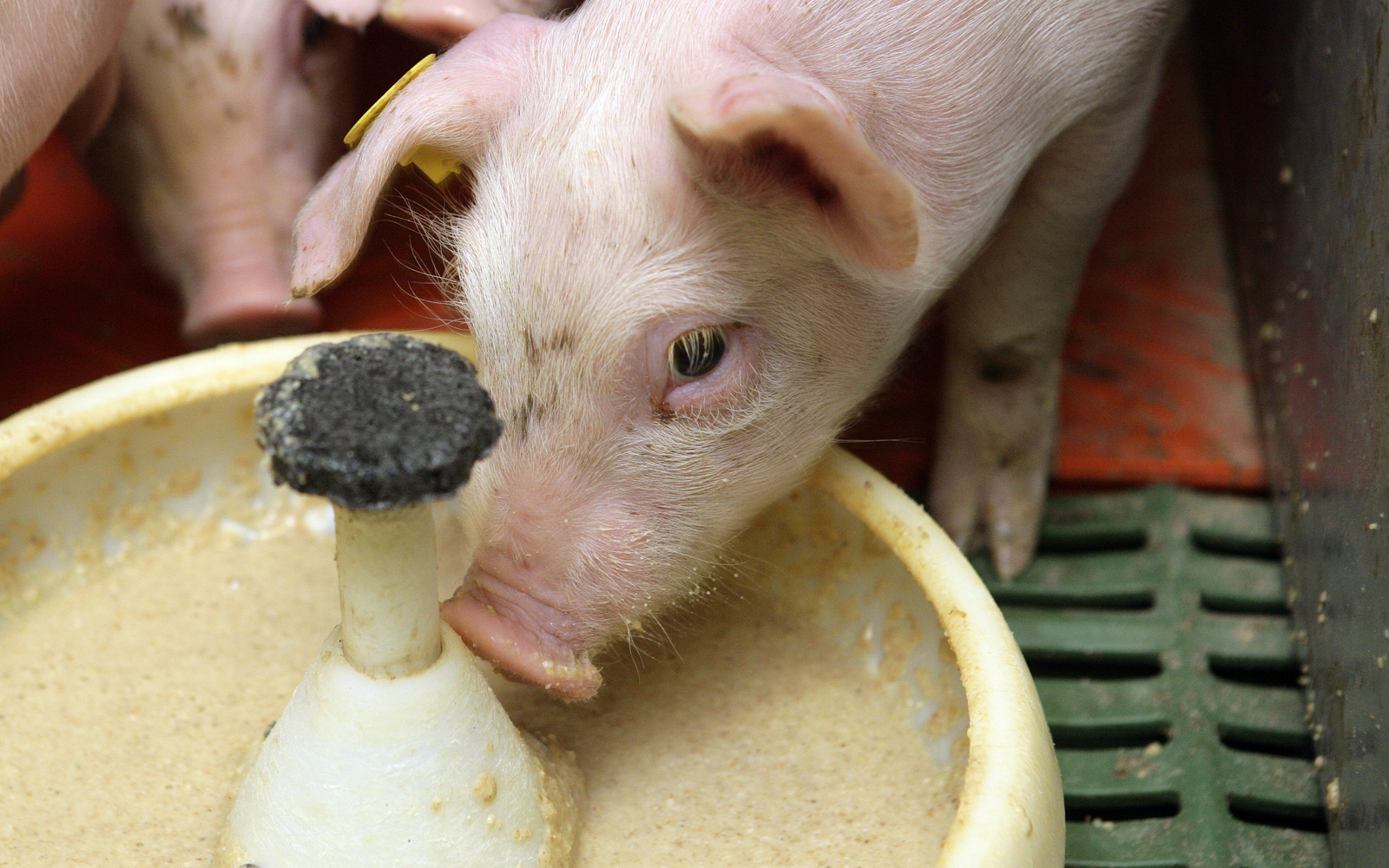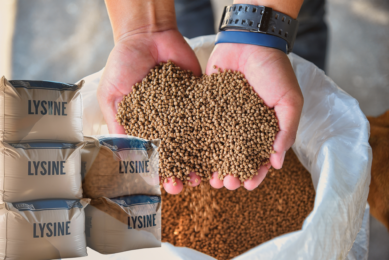Age of piglets key in digestibility measurement of AA

A recent meta-analysis by Drs. J. A. Almeida and Hans H. Stein, from University of Illinois and Dr. Carsten Pedersen from Hamlet Protein has resulted in the abstract “Effect of weight on standardised ileal digestibility of protein and amino acids (AA) in pigs.”
In short, the abstract highlights that ileal digestibility of crude protein (CP) and amino acids (AA) in piglets (<20kg) is lower than in growing (20 to 50kg) and finishing (50 to 110kg) pigs. results also indicated that differences among weight groups of pigs most likely are feedstuff specific.>
Weight of pigs important factor
As an example, the digestibility of CP and AA in HP 300 has been determined only in piglets, whereas digestibility values for CP and AA in de-hulled soybean meal (SBM) (48% CP) have been generated from all weight groups of pigs. The average standardised ileal digestibility (SID) for CP in HP 300 is 89.5%, whereas the SID for CP in soybean meal is 85.5%. However, the average SID for CP in SBM if determined in piglets (<20kg) is only 81.0%. therefore, it may be concluded that using values across all weight categories of pigs may not always provide a true picture of the differences in sid of cp and aa among feed ingredients fed to piglets.>
Over-estimation of true digestibility
The practical implication of this report is that most current formulation practices using digestibility values based on growing and finishing pigs inherently over-estimate the true digestibility of the raw materials for the weaned piglet. It is unknown at this time if there is a consistent age related change across raw materials. If the digestibility change is not consistent, the typical formulation approach using growing and finishing pig digestibility values will rank raw materials incorrectly for the young pig.
Smaller pigs have a lower digestibility of AA
Dr Hans Stein comments: “We have tried to summarise all of our data on soy products in pig feed by combining data from all peer-reviewed publications on the nutritional value of soy products for pigs.
This has resulted in a complete overview of the nutritional values of all soy products. We have also divided the results by pig weight at the time of the trials and we conclude that smaller pigs have a lower digestibility of amino acids than older pigs.”
Dr Carsten Pedersen explains: “Our findings correspond with another study from University of Alberta, Canada, “Amino acid digestibility determined in growing-finishing pigs may not be applicable for weaned piglets” (Dr. Soenke Moehn, 2015). The study compared SID of CP and AA in soybean meal and canola meal in piglets (8.1kg) and growing-finishing pigs (59.1kg). Dr. Moehn, concluded “The large differences, and inconsistency across feedstuffs, indicate that the SID of AA should be directly determined in piglets instead of being extrapolated from growing or finishing pigs.”
The paper by Drs. J. A. Almeida, Hans H. Stein and Carsten Pedersen was first presented at the Digestive Physiology of Pigs meeting in Kliczkow, Poland, in May, 2015. For any questions on the results please contact Dr. Carsten Pedersen, cap@hamletprotein.dk or Dr. Hans H. Stein, hstein@illinois.edu.
Source: Hamlet Protein











